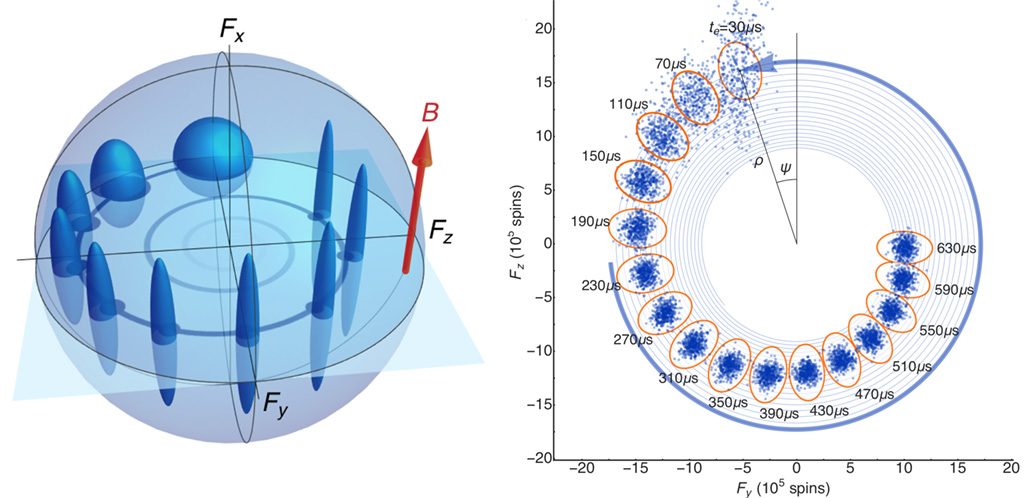Measurement of spin precession is central to extreme sensing in physics, geophysics, chemistry, nanotechnology and neuroscience, and underlies the powerful spectroscopic technique of magnetic resonance. Because there is no spin-angle operator, any measurement of spin precession is necessarily indirect: it can, for example, be inferred from projections of the spin at different times. Because the operators describing spin projections do not commute, quantum measurement backaction — the random change in one observable when a non-commuting observable is measured — necessarily enters the spin measurement record, introducing errors and limiting sensitivity. In [Colangelo et al. Nature 2017] we showed that this disturbance can be reduced by orders of magnitude, by directing the quantum measurement back-action almost entirely into an unmeasured spin component. This generates a planar squeezed state that enables simultaneous and precise knowledge of both spin angle and spin amplitude, i.e., all the variables of interest in spin precession. To prove the method in the lab, we used high-dynamic-range optical quantum non-demolition measurements applied to a precessing magnetic spin ensemble consisting of about 2 million laser-cooled atoms. We observed spin tracking with steady-state angular sensitivity 2.9 decibels better than the “classical limit,” defined as the best possible performance with independent particles, and amplitude sensitivity 7.0 decibels below the corresponding limit for spin amplitude. In sum, we identified a method to almost completely evade quantum uncertainty effects in the highest-performing technique for many important applications.
Reference
